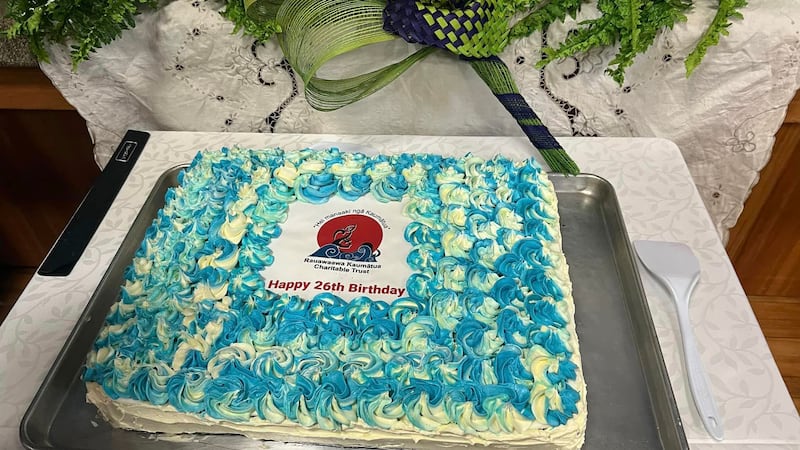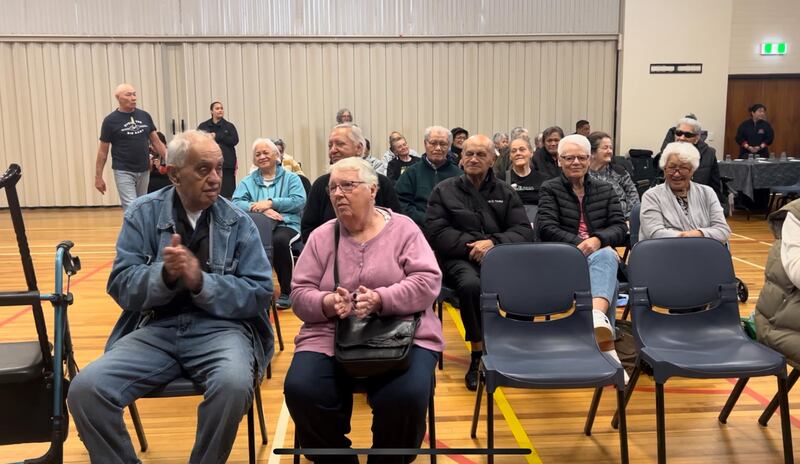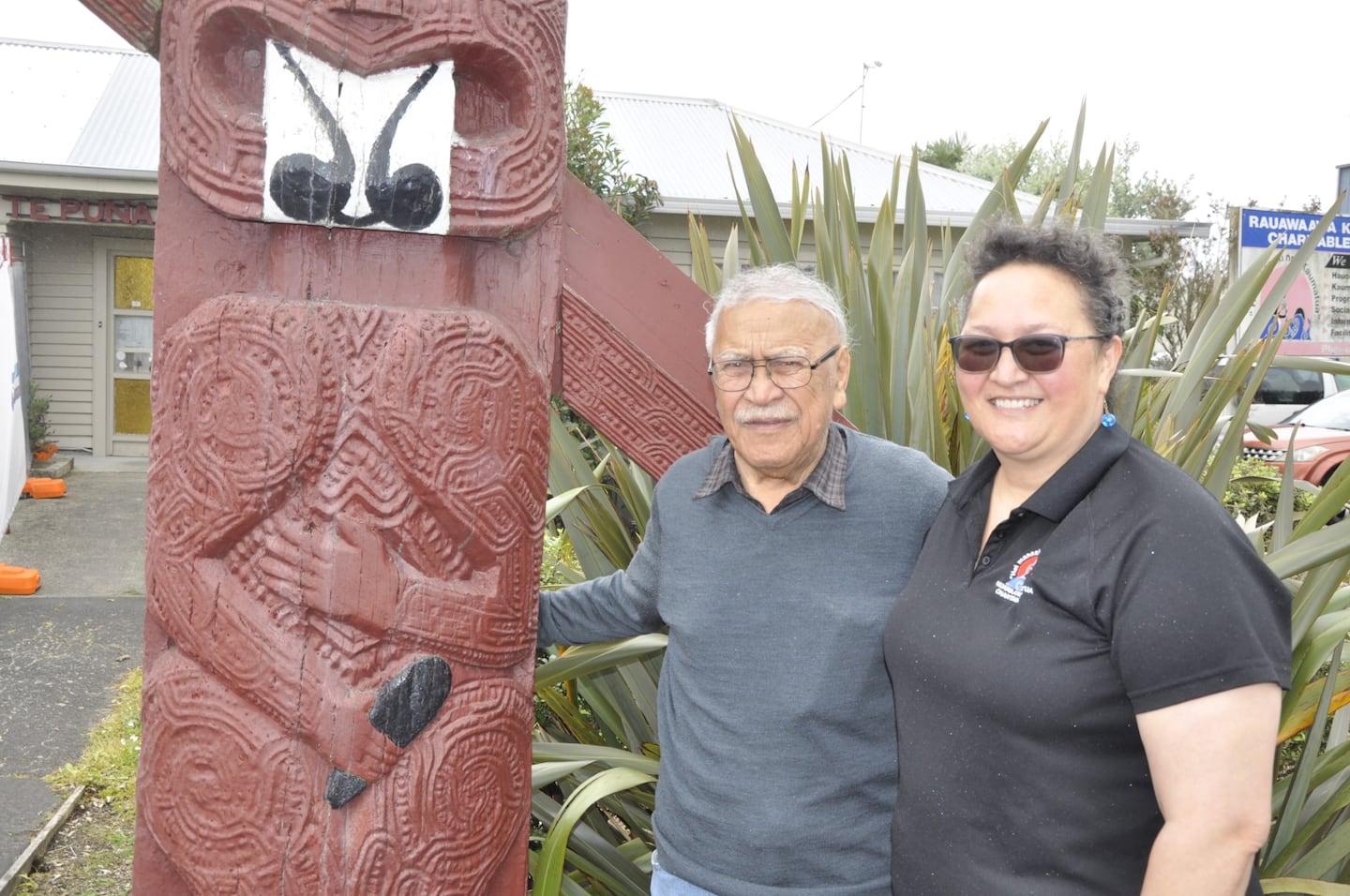Waikato kaumātua charitable trust Rauawaawa has celebrated its silver jubilee with cake-cutting and kaikōrero to mark its journey to date, which continues to transform prejudices against elderly people.
Its long-haul success is firmly rooted in living a kaumātua-centred vision by kaumātua, for kaumātua.
It’s a collaborative co-designed blueprint for the type of support they value and determine for themselves.
“We’re not here to build for ourselves for today but for our future generations coming tomorrow,” says 90-year-old Owen Purcell, a founder on the trust’s board, where the average age is 80.
The busy Rauawaawa chairman reflects on this huge milestone, which has been achieved via a continual collective commitment to the trust’s founding purpose.

He’s inspired by the words of English architectural poet, John Ruskin: “When we build, let us think that we build forever.”
Back in 1997, the journey of the trust began in a dilapidated building in Hamilton that, in its heyday during the 1940s, was an accommodation facility to support urban Māori.
Today, it’s morphing into a multi-million-dollar new dementia and age-friendly community facility alongside daily kaumātua programmes that have not shut down as the construction goes on around them.
Phase two of the new build opens officially in February 2024, with a reach that will go beyond bricks and mortar to innovative live-stream facilities, connecting whānau out beyond the walls.
Seven hundred people aged over 55 are registered with the age-friendly and accessibility kaupapa.
Chief executive Rangimahora Reddy recalls the meaning in how kaumātua like “Mātua Hone and Uncle Roy” explained the whakataukī, “He aha te mea nui o te ao? He tāngata, he tāngata, he tāngata!” [What is the most important thing in the world? It is people!]
“For those koro, when they said it three times, it represented he tāngata of our past, he tāngata of today and he tāngata of our future - it’s not just about the here and now,” she says.
By 2040, 25 per cent of people living in Aotearoa will be aged 65 or older.
Yet despite this need for expanding kaumātua support services growing year by year, it has not come without challenges.
“One of our biggest has been our funding,” Purcell says. Reddy agrees, as attracting investment for an older person’s initiative has been hard.
“There’s been a lack of support and acknowledgement that our kaumātua get in different spaces, whether it be in health, or in housing,” she says.
“We haven’t, as a country, been great at customising our service to the needs of the people that engage with them the most.”
“That’s an area that we need to improve on because we have a growing ageing population.”
Undeterred by having funding applications declined, Rauawaawa has tried a PledgeMe campaign, along with start-up social enterprise Kuki Reka Kani, selling cookie-cutters that imprint Māori designs on to dough, to raise money.
Against the odds, they’ve triumphed, despite kaimahi and the board not always knowing where resources are coming from.
“Our sole purpose has always been to make things better,” Purcell says. Even in unprecedented times, Rauawaawa was an agent of change during moments of crisis.
During the height of Covid in 2020, as a regional Whānau Ora partner and member of the Te Ngira collective, it delivered kai and hygiene boxes to the homes of over 6000 whānau and served over 20,000 people.
The chairman credits the calibre of leadership within the organisation as being a critical component of its enduring success. Its inaugural chief executive was Yvonne Wilson.
In 2019, she won the Māori Community Researcher of the Year Award for a national NGO for Rauawaawa’s collaboration with the University of Waikato and Te Rūnanga o Kirikiriroa on the kaupapa He Kāinga Pai Rawa: A Really Good Home, a research project funded by Building which wrote He Keteparaha Tēnei Mō Te Whare Kaumātua: A Toolkit for Kaumātua Housing, the skills for which were gained from constructing a culture and age-friendly urban housing community.
“We are lucky to have Rangimahora as our chief executive because she’s here all the time. She can see where we can improve. I don’t think we would have got that far if it wasn’t for her not slowing up,” Purcell says.

“She must know every nail that goes into this building, or any and everything that moves. She’s got her finger on it.”
As for the future beyond the new build, Rauawaawa is harnessing the power of social media, virtual reality and AI to connect inter-generationally.
It often uses rangatahi to design while the kaumātua monitor in a consulting role.
“We specifically started our YouTube channel because we identified that there was a real lack of kōrero by kaumātua on tikanga, and created six videos,” Reddy said.
The content has attracted thousands of views and praise from various universities and polytechnics.
Rauawaawa also has two computer games in the prototype stage, which the chief executive says are being tested by kaumātua for viability.
“Just like the cookie-cutters, we start with a simple format before we engage in expenditure. We’ve learnt that from having very little resources.”
Rauawaawa has taken its first tentative steps into AI by holding wānanga with a visiting international expert to teach the kaumātua about it.
“AI was showcased to them and demonstrated, so one of the things they were able to do after the session was to tell whether or not an image was AI-generated or whether it was a real person,” Reddy says.
“We can’t wrap kaumātua in cotton wool but what we can do is give them as many tools as possible.”
Sarah Sparks is a freelance Māori journalist who works across multiple Māori organisations’ kaupapa.


